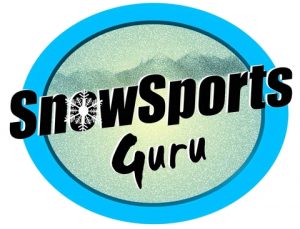Snowboard binding angles are an important factor in snowboard stance setup and will affect the way you ride. Binding angles vary widely between riders and are heavily influenced by the type of snowboarding performed. The angle of snowboard bindings will also be influenced by an individuals anatomy and personal preference.
In this guide I outline the different types of binding angles and explain how to choose the right snowboard binding angles for your riding.
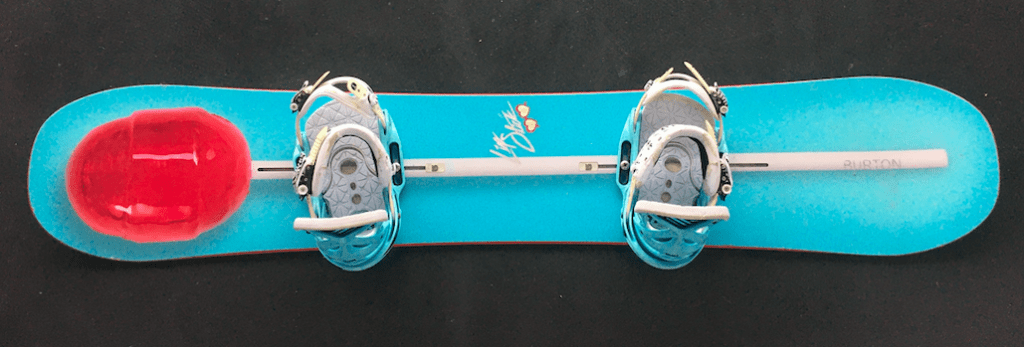
Disclaimer: Some links in this article are affiliate links, which means that if you purchase through them I receive a small commission, at no extra cost to you. This helps cover the cost of running this blog. Thanks for your support!
What Are Snowboard Binding Angles?
A snowboard binding angle refers to the angle of your feet across the snowboard. On the baseplate (bottom) of a binding sits a disc. This disc rotates, allowing the binding to swivel anywhere from +30 degrees to -30 degrees. The binding degrees are marked on the disc, with a pointer or arrow on the baseplate.
Note: If you have EST bindings which are specific to a Burton channel board, the binding does not have a separate disc. The binding is still able to rotate but the mechanism is slightly different.
If the binding sits straight across the board, perpendicular to the edge, it has a zero binding angle. If the front (toe-side) of the binding points towards the nose it has a positive binding angle. If the front of the binding points towards the tail it has a negative binding angle.
All snowboarders will want some degree of positive angle in the front foot since this is the foot that drives a turn. However, the back foot can have a positive, negative or zero angle, depending on riding style, anatomy and personal preference.
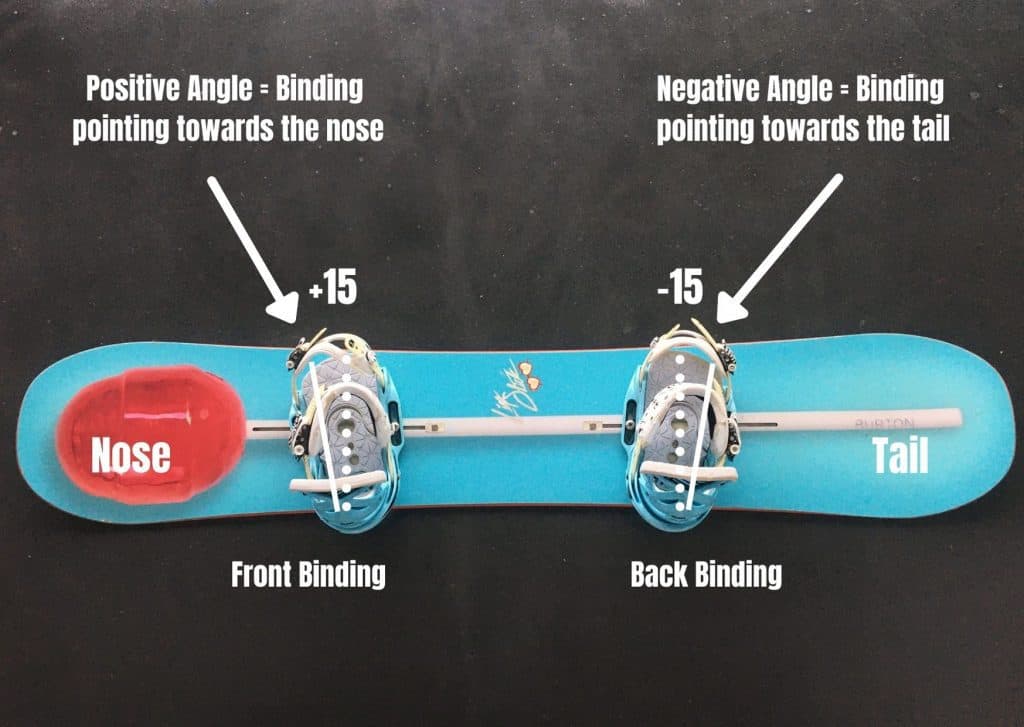
Read Next
- Fun gift ideas for snowboarders
- Which is best – BOA or laces?
- What is Magne Traction and why do I need it?
- A guide to snowboard boot stiffness
Snowboard Binding Angle Types
There are 3 broad categories for stance angles and within each category there are multiple variations.
- Positive/zero – where the front foot is a positive angle and the back foot sits at zero. This is well suited to beginners and all mountain riders
- Positive/positive – where the front foot and back foot have positive angles. This is well suited to free riders or riders who love to carve.
- Positive/negative also known as duck – where the front foot has a positive angle and the back foot has a negative angle. This is well suited to freestyle riders and all mountain riders.
Tools required to setup your snowboard:
1. Snowboard Binding Angles for Beginners – Positive/zero
As a beginner your focus will initially be to ride in one direction, either regular or goofy. In order to make this easier and more obvious at the start, it’s recommended to have the front foot set at a positive angle and the back foot set to zero.
Typical beginner angles will be +15/0 or +18/0. If you’re confident about which direction you will snowboard ie. either regular or goofy you might prefer the +18/0 as this greater angle can be more comfortable for the front knee.
As a beginner you might consider the use of a stomp pad to make one-footed riding easier. Read this guide to learn more
Although this is a stance suggested for beginners, that’s not to say a positive/zero stance is only for beginners! Having the back foot set to zero is quite common for all mountain snowboarders, since it helps drive into toe-side turns. With the back foot set to zero it also means riding switch is possible without putting too much load on the back knee.
Pro riders that rock a positive/zero stance:
- Gigi Ruf +15/0
- Mark McMorris +9/0
- Nicolas Muller +18/0
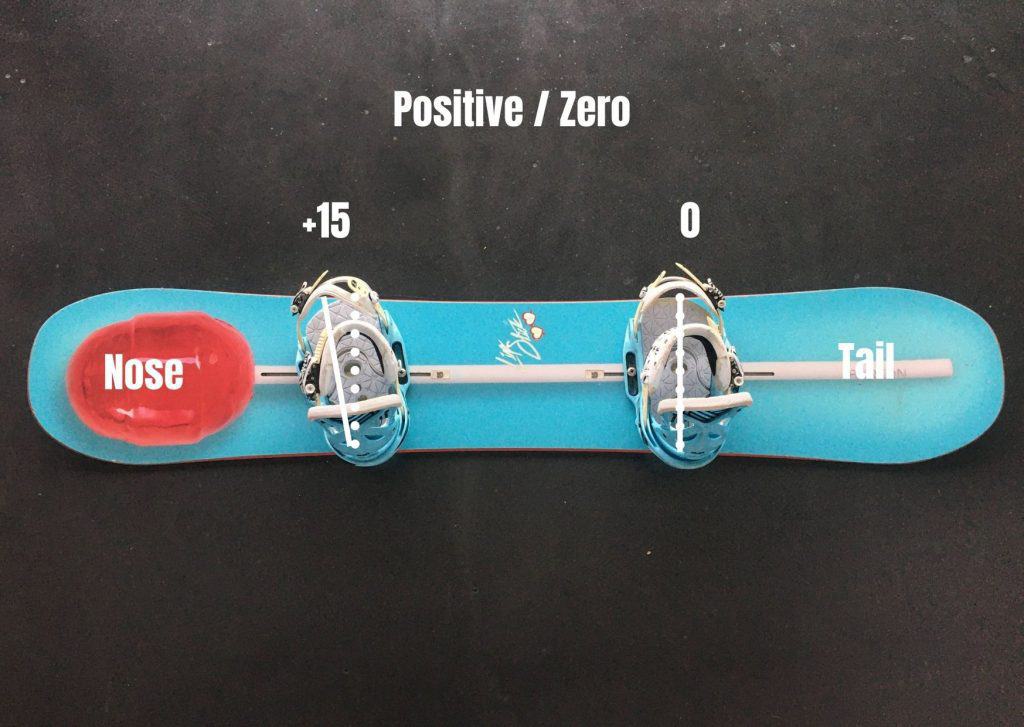
2. Snowboard Binding Angles for Freeride or Carving – Positive/positive
Many freeriders will choose to ride with both the front and back bindings set to a positive angle. In this stance both knees are slightly pointed in the direction of travel, allowing for more aggressive turns from edge to edge.
Riding a positive/positive stance does make switch riding feel awkward, though not impossible. However, as a dedicated free rider or carver, chances are you will have a directional board which isn’t designed to be ridden switch in any case.
Pro riders who rock a positive/positive stance:
- Jeremy Jones +27/+6
- Xavier de le Rue +18/+3
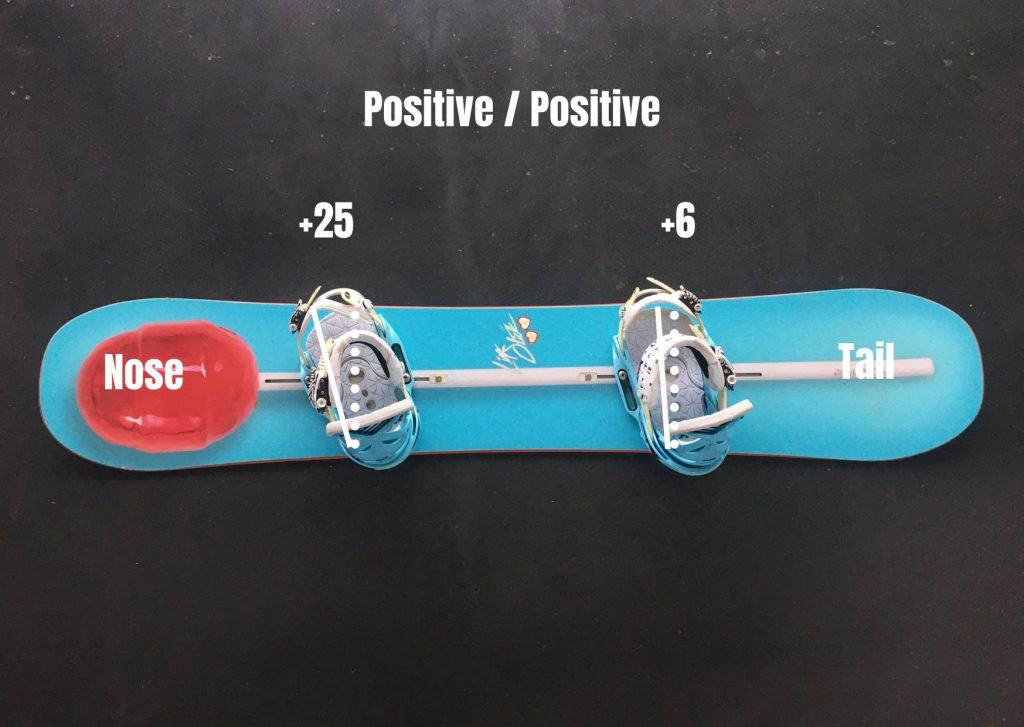
3. Snowboard Binding Angles for Freestyle – Positive/negative AKA Duck
Having a positive/negative binding setup is also known as having a duck stance. There is a mirrored duck stance where the positive angle of the front foot is mirrored by a negative angle in the back foot. Then there is a slight duck stance where the back binding is negative but not as much as the front foot is positive. This is my preferred riding stance as I feel it is the most versatile.
The biggest benefit to riding in a positive/negative stance is that the negative angle of the back foot is more conducive to riding switch. Since freestyle and half-pipe riders spend almost equal time riding forwards and backwards, it makes sense that their stance be close to equal.
Pro riders who rock a mirrored duck stance:
- Stale Sandbech and Anna Gasser +12/-12
- Eiki Helgason +15/-15
- Danny Davis +9/-9
Pro riders who rock a slight duck stance:
- Chloe Kim +15/-12
- Travis Rice +19/-9
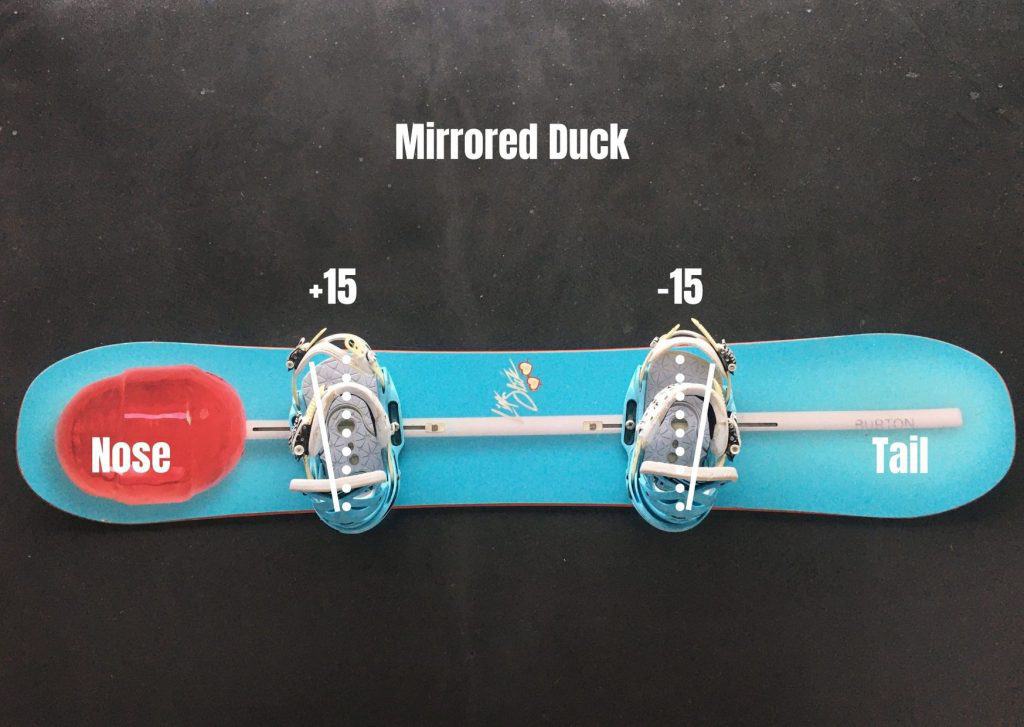
4. Snowboard Binding Angles for All-Mountain – positive/negative or positive/positive
All mountain riders like to do a bit of everything, from riding powder to taking a few laps through the park. For this reason, all mountain binding angles can vary hugely.
All mountain riders that spend more time freeriding will most likely have a positive/positive stance, whereas all mountain riders that spend more time doing freestyle riding will mostly likely have a slight duck stance.
A slight duck stance is very common among all mountain riders.
Pro riders who rock an all-mountain slight duck stance:
- Victor de le Rue +15/-3
- Marcus Kleveland +7/-3
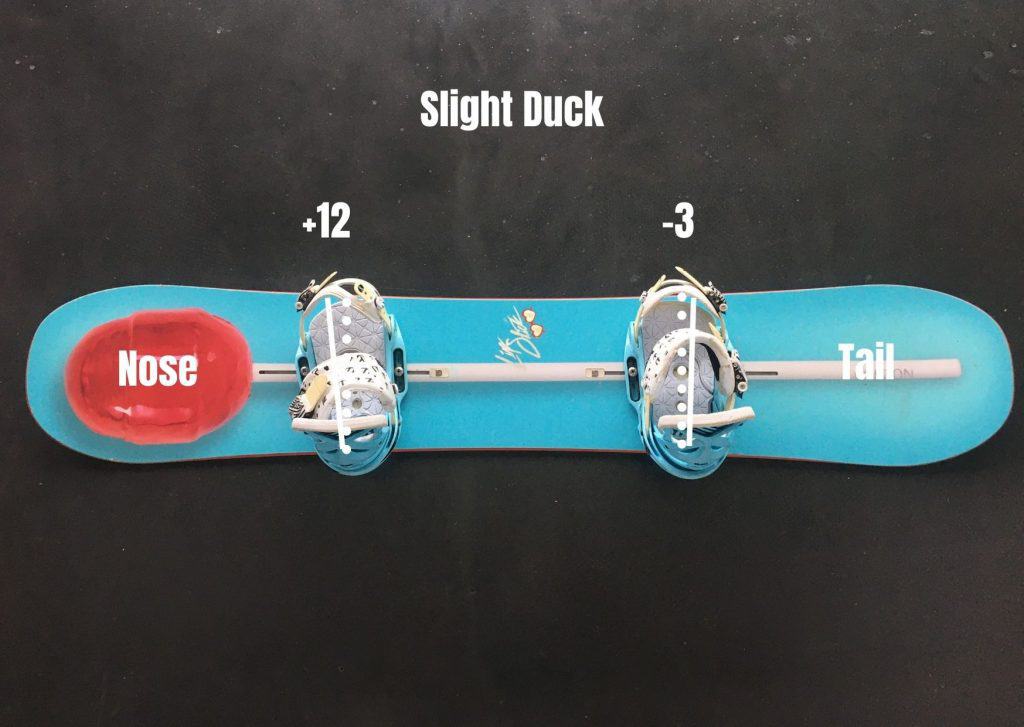
Perhaps the pro-rider with the most unusual stance is Yuki Kadono, who chooses a +6/-9 setup! But hey, he can do back to back triple corks so it obviously works just fine for him!
Final Thoughts on Angles for Snowboard Bindings
As you can see from the list of stances used by pro-riders, there are infinite stance angle options and the binding angles will vary depending mostly on riding style. For example Jeremy Jones is an out and out free rider and he uses positive/positive binding angles, whereas Jaime Anderson has dominated women’s slopestyle and she uses a mirrored duck stance.
As with other factors that contribute to snowboard stance, such as board size, board shape and setback, you might find that your angles change depending on the type of riding you’re doing on that day.
For example, if you’re blessed with a deep powder day or a bluebird groomer day you might set your stance to positive/positive, whereas if you plan to spend the day doing park laps you might set your stance to positive/negative. As a beginner I would suggest starting with a positive/zero stance, somewhere around +15/0 and experiment from there.
Don’t forget, for optimal performance you need to keep your snowboard properly waxed to ensure it runs smoothly over the snow and always maintain sharp edges to allow the snowboard to cut through the hard pack.
